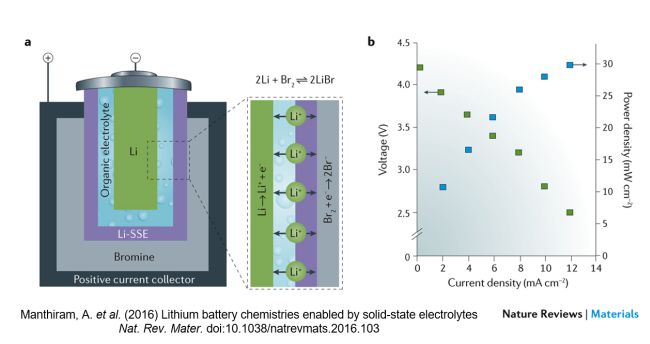Since its successful commercialization in early 90’s of last century, lithium-ion batteries have been widely used in consumer electronics, EVs (electric vehicles), on/off-grid energy storages and other fields. Lithium-ion batteries have offered us great convenience and impacted our everyday lives from almost every aspect. However, due to the difficulty of continuing to increase the energy density of the existing commercial lithium-ion battery systems and their inherent safety problems, the current development of lithium-ion batteries has encountered a bottleneck, which can only be overcome by applying new technologies. Researchers have reported new theories and technologies for better understanding the fundamentals and manufacturing of solid-state batteries. Using solid electrolyte to replace the existing organic electrolyte is one of the effective ways to improve the energy density and safety of lithium batteries. However, solid electrolytes still have many problems in terms of ionic conductivity, interface impedance, and high-pressure resistance, which are among the difficulties of slowing down their commercialization. This article gives a brief review of the background of solid-state battery development, the advantages of solid-state batteries over lithium-ion batteries and a prospective view of the future of solid-state batteries.
Review of the development of Solid-state Battery technologies:
Solid-state sodium batteries
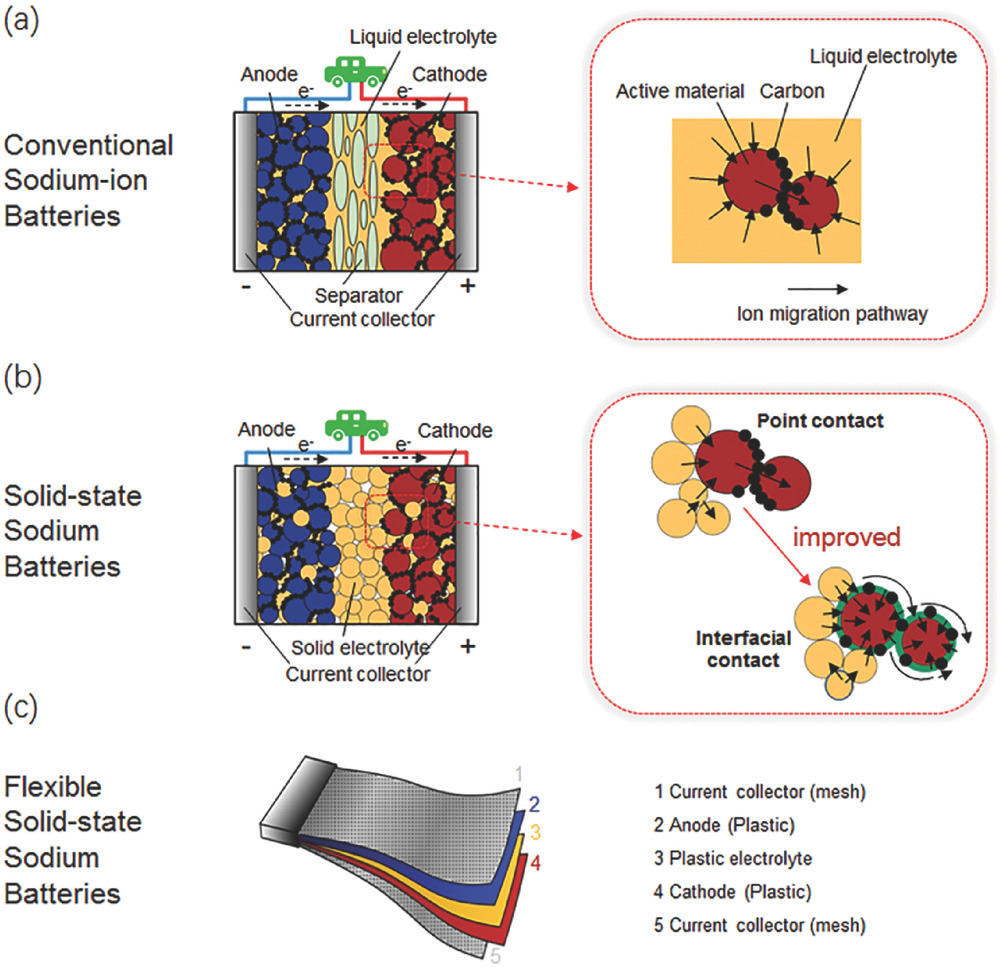
Solid electrolytes are critical to the improvement of the safety and energy density of sodium-ion batteries, but they currently have problems such as low ion conductivity, poor wettability, and poor electrode/electrolyte interface stability. Figure 1 shows the review of three types of sodium ion solid electrolytes: solid polymer electrolytes (SPE), organic-inorganic composite electrolytes, and inorganic solid electrolytes. Zhao, C. et al. also discuss the current challenges and critical viewpoints in the development of solid sodium ion batteries.
Interfaces in cathode composites of solid-state batteries
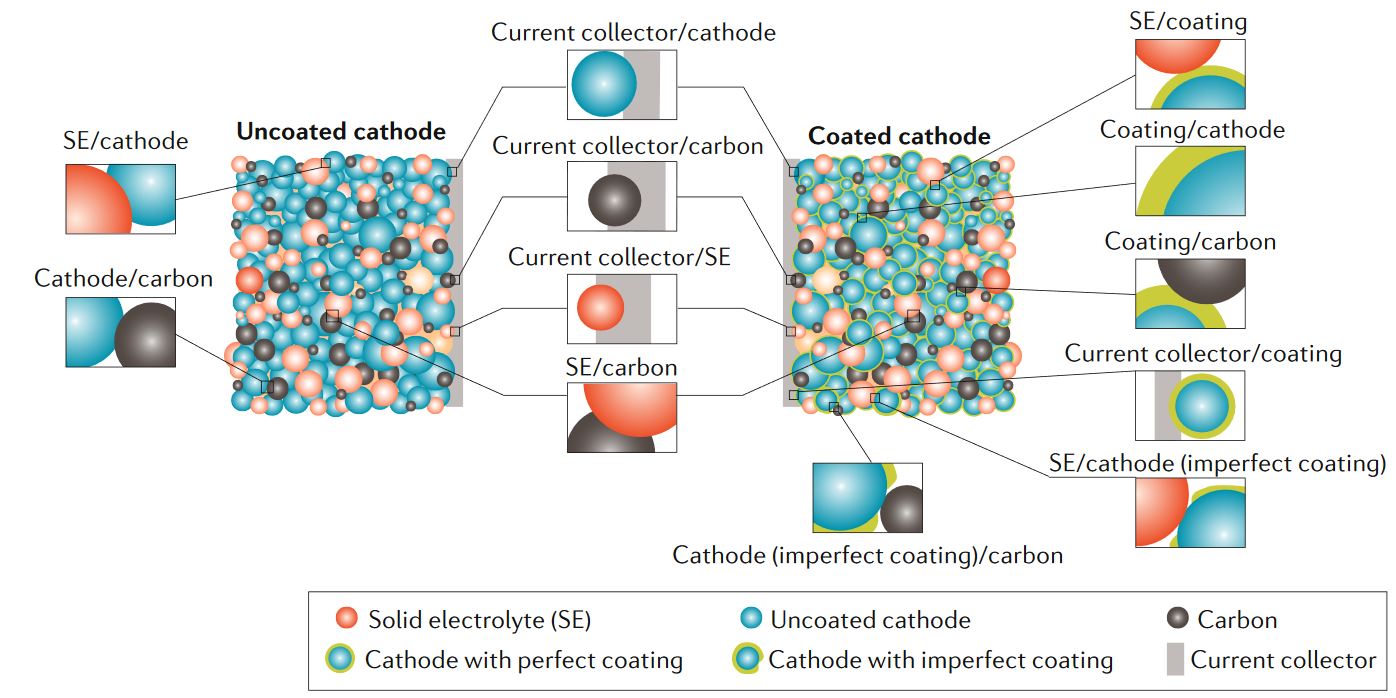
The stability of the interface between various components in solid-state batteries has a very important influence on the electrochemical performance of solid-state batteries. Over the years, intensive research has been conducted on theoretical calculations and experimental investigations of the interface problems. Xiao, Y. et al. reported the experimental findings of various solid electrolytes and links these experimental results with theoretical calculations, offering a deeper understanding of the interface reactions in solid-state batteries and provide a guidance for future interface engineering design.
Interface reactions between solid and liquid electrolytes
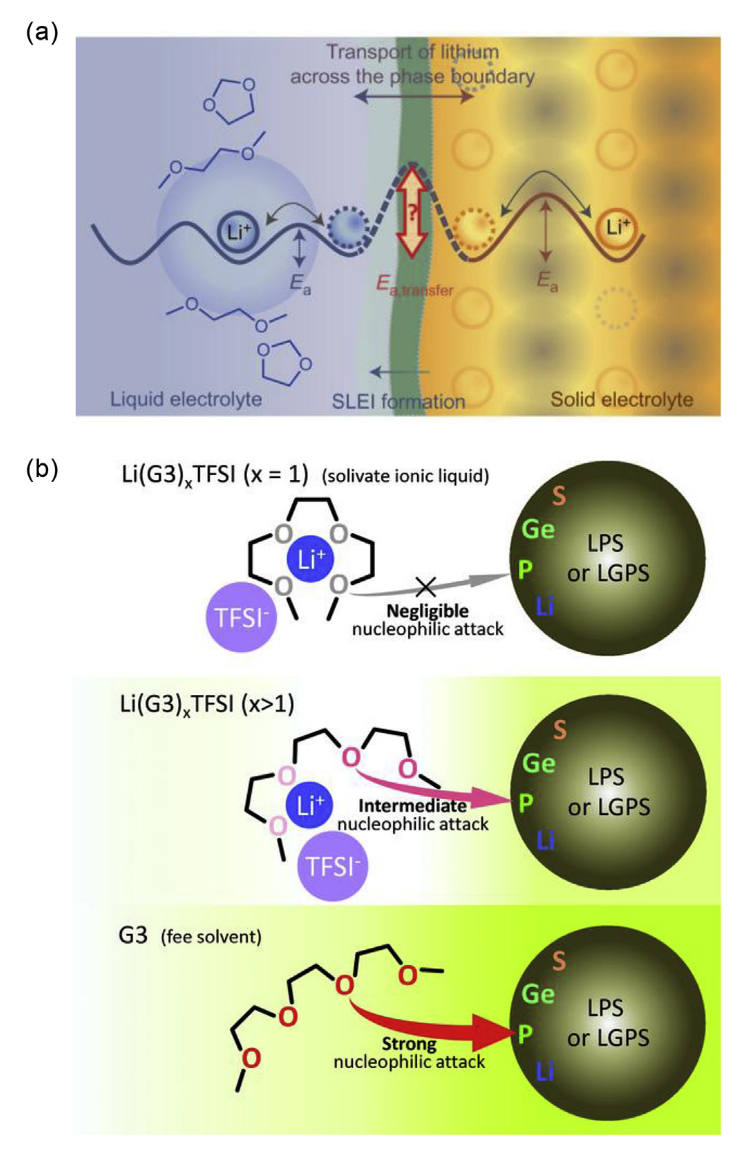
To solve the interface problem in solid-state batteries, adding a small amount of liquid electrolyte is the most convenient and effective way. Figure 3 illustrates the principle of the interface behaviors between the liquid electrolyte, the electrode, and the solid electrolyte. The study also provides insight of new strategies such as interface wetting, in-situ polymerization and interface reactions. In conclusion, the researchers of this study summarize the limitations and development prospects of “liquid therapy” from the perspective of interface science and engineering.
Inorganic solid-state electrolytes
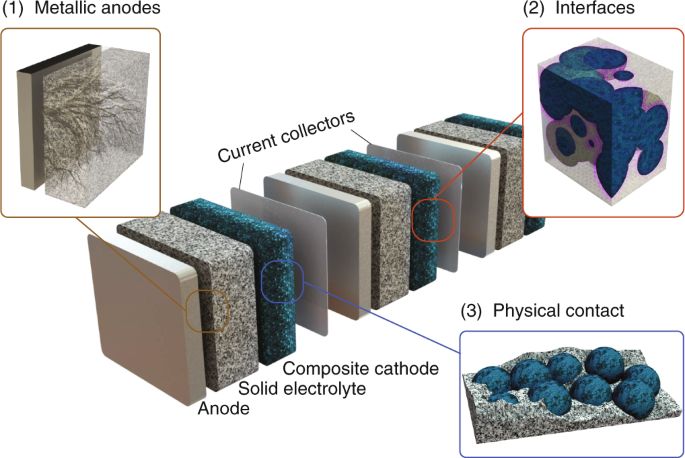
In the key areas of sustainable energy storage, solid-state batteries have attracted much attention due to their safety, energy density and cycle life advantages. Famprikis, T. et al. review the key issues in solving multi-scale ion transport, electrochemical and mechanical properties, as well as current processing methods, and provide the basic understanding and latest progress of inorganic solid electrolytes. The main challenges facing the practical applications of solid-state batteries include the use of metal anodes, the stability of the interface, and the maintenance of physical contact. A better understanding of the basic properties of solid electrolyte materials is very important to solve these challenges.
Challenges faced by solid-state batteries

With the difficulty of continuously increasing the energy density of traditional lithium-ion battery systems and the inherent safety issues, the use of solid electrolytes instead of traditional organic electrolytes is a viable solution to solve these problems, but the development of solid-state batteries is far from practical for commercialization. Tan, D.H.S. et al. reviewed the four major challenges for the practical application of solid-state batteries, namely, solid electrolyte properties, interface characterization technology, large-scale design and production, and sustainable development; and discussed these four challenges in detail and provides guidance for solving these problems.
SPEs (Solid Polymer Electrolytes)
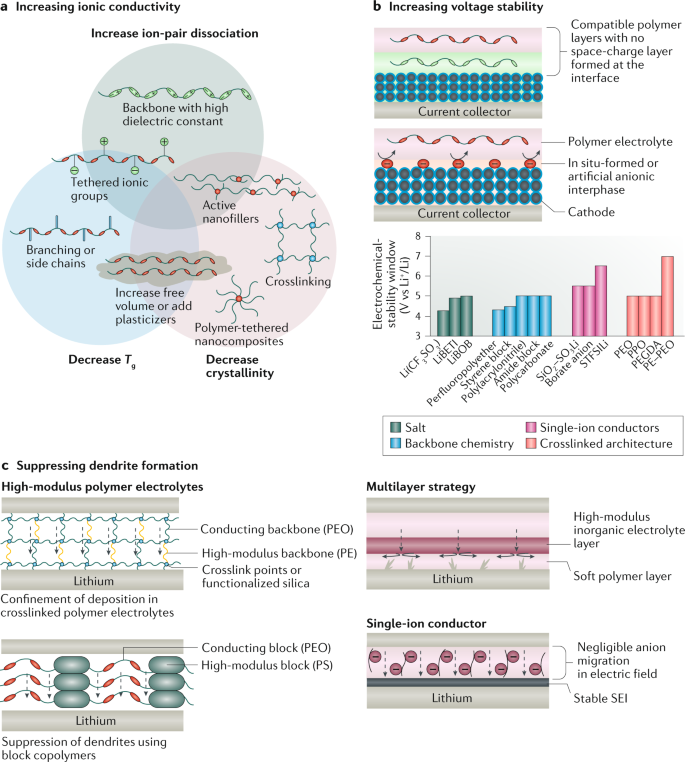
Figure 6 shows the study by Zhao, Q. et al., who reviewed the latest developments in the design, synthesis and analysis of solid electrolytes, as well as the main failure models, limiting factors and design concepts in the process of advancing the practical application of solid electrolytes. The team also summarized different univalent carriers and multiple transport mechanisms of valence carriers in the body phase and interface of solid electrolyte and provided an detailed analysis of the progress in solving the problems of inorganic solid electrolyte, such as low ion conductivity and high interface impedance, poor high voltage resistance of polymer solid electrolyte and low cation migration number. The team envisioned the future development of solid electrolytes from the perspectives of chemistry, geometry, mechanics, electrochemistry, and interfacial transport properties, etc.
SSEs (Solid-State Electrolytes)
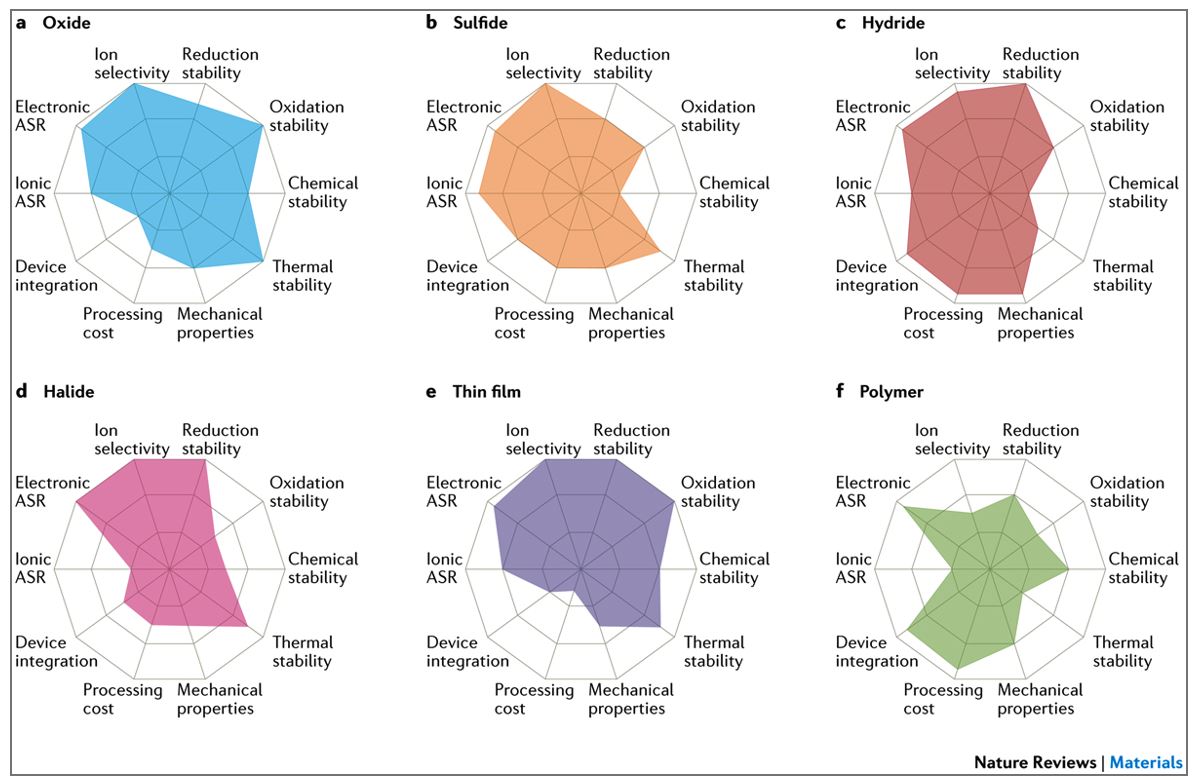
Figure 7 shows different SSEs (solid-state electrolytes). Manthiram et al., reviewed the background of solid-state batteries studies, discussed the development status, ion transport mechanism and basic properties of solid-state electrolytes (SSEs). The team was focused on various battery systems using solid-state electrolytes (SSEs), including all-solid-state lithium-ion batteries and new solid-state lithium metal batteries (such as lithium-air batteries, lithium-sulfur batteries, lithium-bromine systems, etc.). The prospect of new battery systems based on solid electrolytes is the drive of further development of lithium-ion batteries due to their high safety, high stability, long cycle life, and low cost. However, the practical application of solid-state batteries still needs a lot of effort. In this study, the major problems faced by solid-state batteries, such as the ionic conductivity, electrochemical stability, mechanical properties, and electrode/electrolyte interface compatibility of solid electrolytes, are discussed in detail.
Reference
Zhao, Q., Stalin, S., Zhao, C. et al. Designing solid-state electrolytes for safe, energy-dense batteries. Nat Rev Mater 5, 229–252 (2020). https://doi.org/10.1038/s41578-019-0165-5
Tan, D.H.S., Banerjee, A., Chen, Z. et al. From nanoscale interface characterization to sustainable energy storage using all-solid-state batteries. Nat. Nanotechnol. 15, 170–180 (2020). https://doi.org/10.1038/s41565-020-0657-x
Manthiram, A., Yu, X. & Wang, S. Lithium battery chemistries enabled by solid-state electrolytes. Nat Rev Mater 2, 16103 (2017). https://doi.org/10.1038/natrevmats.2016.103
Famprikis, T., Canepa, P., Dawson, J.A. et al. Fundamentals of inorganic solid-state electrolytes for batteries. Nat. Mater. 18, 1278–1291 (2019). https://doi.org/10.1038/s41563-019-0431-3
Zhao, C.Z., Zhao, B.C., Yan, C., Zhang, X.Q., Huang, J.Q., Mo, Y., Xu, X., Li, H. and Zhang, Q., 2020. Liquid phase therapy to solid electrolyte–electrode interface in solid-state Li metal batteries: a review. Energy Storage Materials, 24, pp.75-84.
Xiao, Y., Wang, Y., Bo, S. et al. Understanding interface stability in solid-state batteries. Nat Rev Mater 5, 105–126 (2020). https://doi.org/10.1038/s41578-019-0157-5
Zhao, C., Liu, L., Qi, X., Lu, Y., Wu, F., Zhao, J., Yu, Y., Hu, Y.S. and Chen, L., 2018. Solid‐state sodium batteries. Advanced Energy Materials, 8(17), p.1703012.

